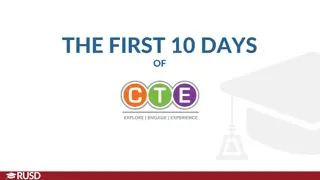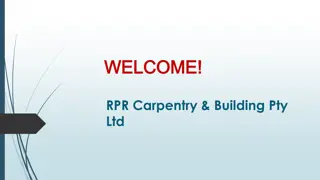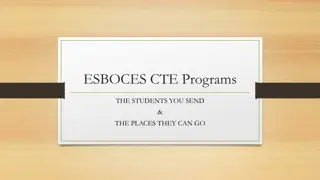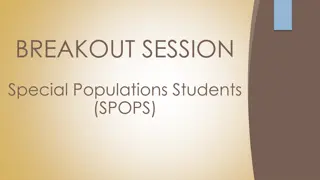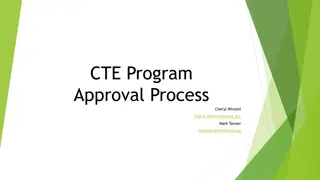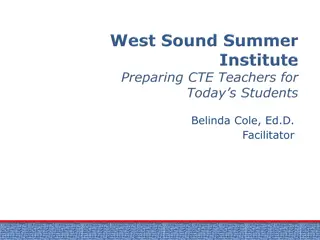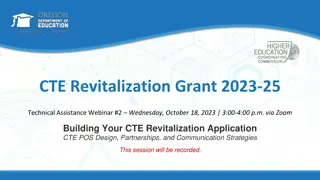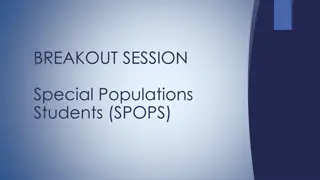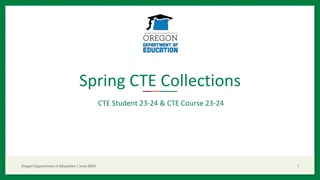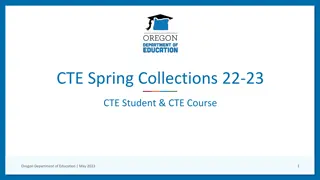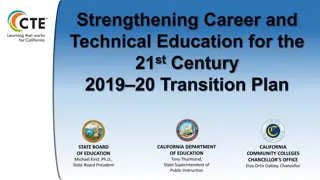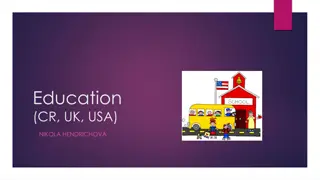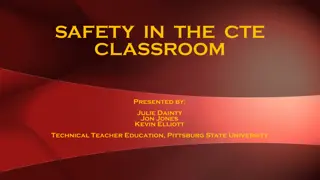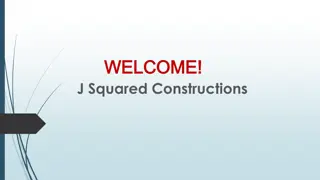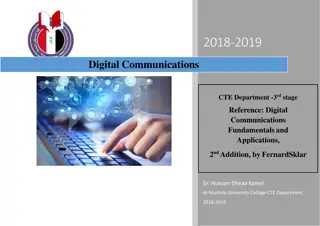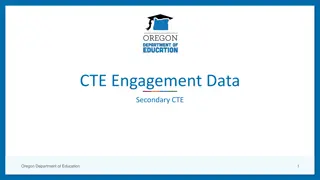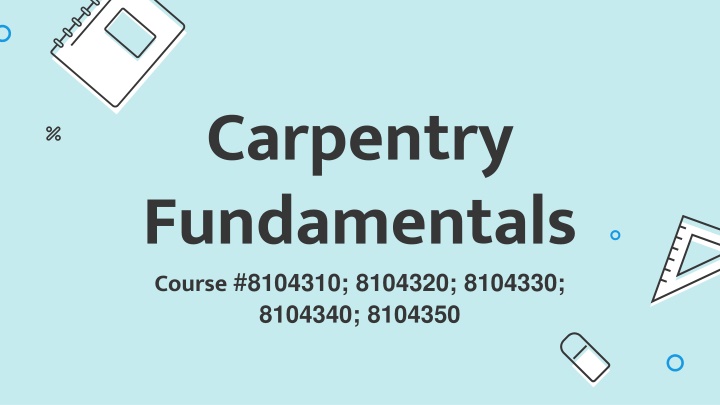
Carpentry Fundamentals Course for Certified Technical Education (CTE) Secondary Program
Prepare for employment in the carpentry industry by learning fundamental carpentry skills through a planned sequence of instruction totaling five credits. Develop competencies in safety, tools, math, construction drawing, materials, sustainability, and more. Gain hands-on experience through laboratory activities and align with academic standards.
Download Presentation

Please find below an Image/Link to download the presentation.
The content on the website is provided AS IS for your information and personal use only. It may not be sold, licensed, or shared on other websites without obtaining consent from the author. If you encounter any issues during the download, it is possible that the publisher has removed the file from their server.
You are allowed to download the files provided on this website for personal or commercial use, subject to the condition that they are used lawfully. All files are the property of their respective owners.
The content on the website is provided AS IS for your information and personal use only. It may not be sold, licensed, or shared on other websites without obtaining consent from the author.
E N D
Presentation Transcript
Carpentry Fundamentals Course #8104310; 8104320; 8104330; 8104340; 8104350
Certified Technical Education (CTE) Secondary Program The purpose of this secondary program is to prepare students for employment in the carpentry industry with an emphasis on learning fundamental carpentry skills.
Program Structure This program is a planned sequence of instruction totaling five credits. Course Number 8104310 Title Certifications SP/2 Construction Safety HBI Carpentry HBI Core HBI Green Core OSHA - 10 Carpentry Fundamentals 8104320 8104330 8104340 8104350 Carpentry Layout Carpentry Framing Carpentry Exterior Carpentry Finish
Course Description: The purpose of this course is for the student to develop competencies essential to the carpentry industry including safety, use of manual and power tools, applied math, construction plan drawing, building materials, fasteners and hardware, rigging and scaffolding, sustainability and employability skills.
Career Ready Practices 1. Act as a responsible and contributing citizen and employee. 2. Apply appropriate academic and technical skills. 3. Attend to personal health and financial well-being. 4. Communicate clearly, effectively and with reason. 5. Consider the environmental, social and economic impacts of decisions. 6. Demonstrate creativity and innovation. 7. Employ valid and reliable research strategies. 8. Utilize critical thinking to make sense of problems and persevere in solving them. 9. Model integrity, ethical leadership and effective management. 10. Plan education and career path aligned to personal goals. 11. Use technology to enhance productivity. 12. Work productively in teams while using cultural/global competence.
Additional Information Laboratory Activities Laboratory investigations that include scientific inquiry, research, measurement, problem solving, emerging technologies, tools and equipment, as well as, experimental, quality, and safety procedures are an integral part of this career and technical program/course. Laboratory investigations benefit all students by developing an understanding of the complexity and ambiguity of empirical work, as well as the skills required to manage, operate, calibrate and troubleshoot equipment/tools used to make observations. Students understand measurement error; and have the skills to aggregate, interpret, and present the resulting data. Equipment and supplies should be provided to enhance hands-on experiences for students. Academic Alignment Secondary Career and Technical Education courses are pending alignment to the B.E.S.T. (Benchmarks for Excellent Student Thinking) Standards for English Language Arts (ELA) and Mathematics that were adopted by the State Board of Education in February 2020. Academic alignment is an ongoing, collaborative effort of professional educators that provide clear expectations for progression year-to-year through course alignment. This initiative supports CTE programs by improving student performance through the integration of academic content within CTE courses.
Additional Information Florida Standards for English Language Development (ELD) English language learners communicate for social and instructional purposes within the school setting. ELD.K12.SI.1.1 English Language Development (ELD) Standards Special Notes: Teachers are required to provide listening, speaking, reading and writing instruction that allows English language learners (ELL) to communicate for social and instructional purposes within the school setting. For the given level of English language proficiency and with visual, graphic, or interactive support, students will interact with grade level words, expressions, sentences and discourse to process or produce language necessary for academic success. The ELD standard should specify a relevant content area concept or topic of study chosen by curriculum developers and teachers which maximizes an ELL s need for communication and social skills. To access an ELL supporting document which delineates performance definitions and descriptors, please click on the following link: http://www.cpalms.org/uploads/docs/standards/eld/SI.pdf. For additional information on the development and implementation of the ELD standards, please contact the Bureau of Student Achievement through Language Acquisition at sala@fldoe.org.
Additional Information Special Notes The occupational standards and benchmarks outlined in this secondary program correlate to the standards and benchmarks of the postsecondary program with the same Classification of Instructional Programs (CIP) number. Career and Technical Student Organization (CTSO) SkillsUSA is the intercurricular career and technical student organization for providing leadership training and reinforcing specific career and technical skills. Career and Technical Student Organizations provide activities for students as an integral part of the instruction offered. Cooperative Training OJT On-the-job training is appropriate but not required for this program. Whenever offered, the rules, guidelines, and requirements specified in the OJT framework apply.
Accommodations Federal and state legislation requires the provision of accommodations for students with disabilities as identified on the secondary student s Individual Educational Plan (IEP) or 504 plan or postsecondary student s accommodations plan to meet individual needs and ensure equal access. Accommodations change the way the student is instructed. Students with disabilities may need accommodations in such areas as instructional methods and materials, assignments and assessments, time demands and schedules, learning environment, assistive technology and special communication systems. Documentation of the accommodations requested and provided should be maintained in a confidential file. In addition to accommodations, some secondary students with disabilities (students with an IEP served in Exceptional Student Education (ESE)) will need modifications to meet their needs. Modifications change the outcomes or what the student is expected to learn, e.g., modifying the curriculum of a secondary career and technical education course. Note: postsecondary curriculum and regulated secondary programs cannot be modified. Some secondary students with disabilities (ESE) may need additional time (i.e., longer than the regular school year), to master the student performance standards associated with a regular course or a modified course. If needed, a student may enroll in the same career and technical course more than once. Documentation should be included in the IEP that clearly indicates that it is anticipated that the student may need an additional year to complete a Career and Technical Education (CTE) course. The student should work on different competencies and new applications of competencies each year toward completion of the CTE course. After achieving the competencies identified for the year, the student earns credit for the course. It is important to ensure that credits earned by students are reported accurately. The district s information system must be designed to accept multiple credits for the same course number for eligible students with disabilities.
Additional Resources For additional information regarding articulation agreements, Bright Futures Scholarships, Fine Arts/Practical Arts Credit and Equivalent Mathematics and Equally Rigorous Science Courses please refer to: http://www.fldoe.org/academics/career-adult-edu/career-tech-edu/program- resources.stml


